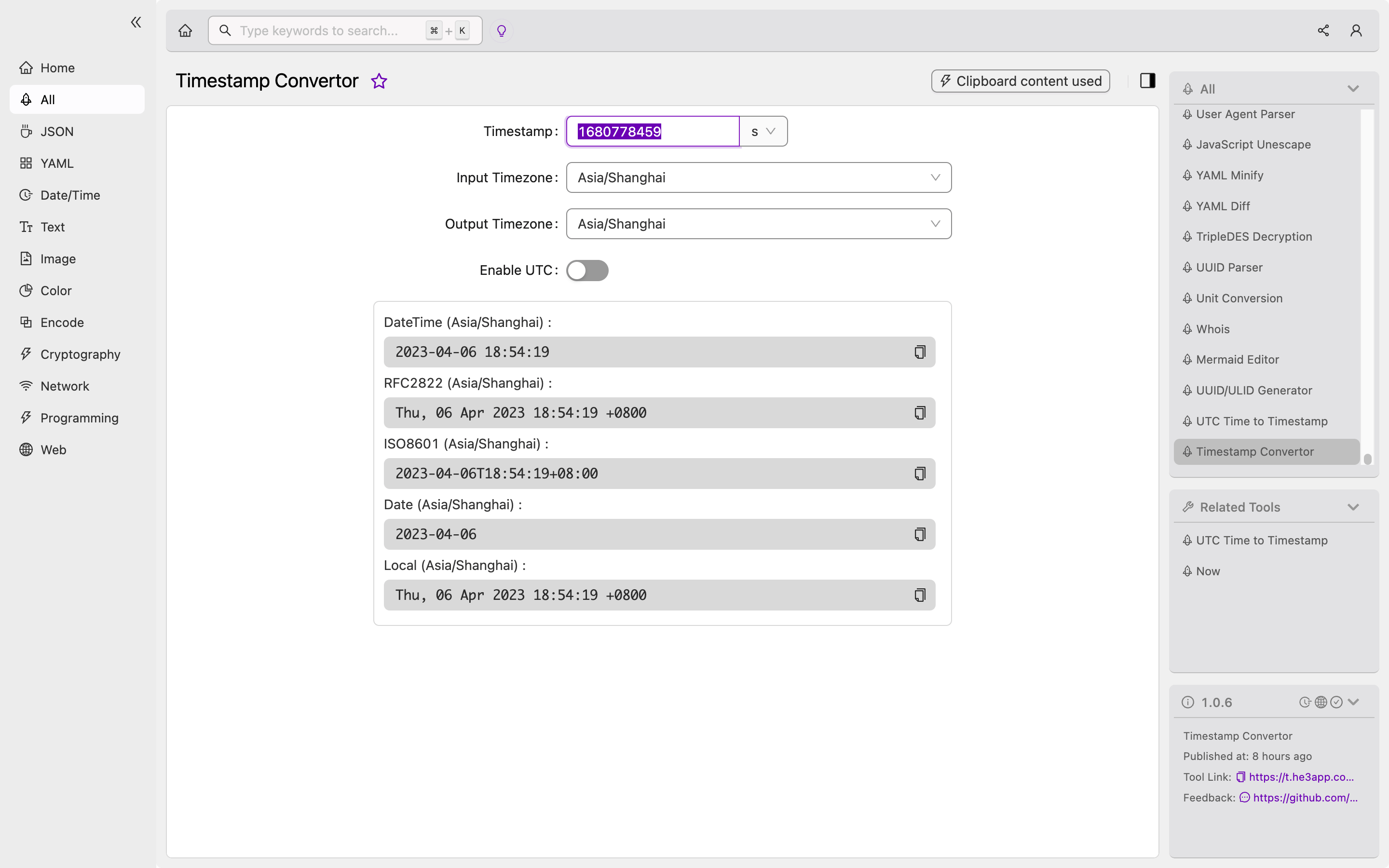Mastering Timestamp Conversion: A Guide for Developers
Timestamps are essential in software development. They are used to track events, record data, and synchronize operations. Timestamps are typically expressed in Unix Timestamp or Epoch Time format, which is based on the number of seconds since 00:00:00 UTC on January 1, 1970. However, Unix Timestamp can be difficult to read and manipulate, which is where a Timestamp Convertor comes in handy.
What is a Timestamp Convertor?
A Timestamp Convertor is a tool that converts Unix Timestamp or Epoch Time to a human-readable format and vice versa. It allows developers to convert timestamps from one timezone to another, calculate the difference between two timestamps, or generate timestamps for specific dates and times.
There are various tools available for Timestamp Conversion, ranging from web-based applications to software libraries. For example, you can use the date command in Unix-based systems to convert timestamps, or you can use Timestamp Convertor tool in He3 Toolbox (https://t.he3app.com?fvo3) easily.

How Does Timestamp Convertor Work?
Timestamp Convertor works by converting Unix Timestamp or Epoch Time to a human-readable format using a specific timezone. It uses algorithms to calculate the difference between two timestamps, generate timestamps for specific dates and times, or convert timestamps from one timezone to another.
However, Timestamp Conversion can be tricky due to the different timezone formats and daylight saving times. Therefore, it is essential to have a reliable Timestamp Convertor that can handle these complexities.
Scenarios for Developers
As a developer, you might encounter various scenarios that require Timestamp Conversion. Some of the most common scenarios include:
- Converting timestamps in different timezones
- Calculating the duration between two timestamps
- Generating timestamps for specific dates and times
- Recording timestamps for data analysis
Regardless of the scenario, a reliable Timestamp Convertor can save developers time and effort in handling timestamps.
Key Features of Timestamp Convertor
Here are some of the key features that developers should look for in Timestamp Convertor:
| Feature | Description |
|---|---|
| Timezone support | The ability to handle different timezone formats and daylight saving times |
| Precision | The ability to handle timestamps with a high level of precision, such as microseconds or nanoseconds |
| User-friendly interface | A clear and intuitive interface that makes it easy to convert timestamps |
| Batch conversion | The ability to convert multiple timestamps at once |
| Integration | The ability to integrate with other software applications or libraries |
Misconceptions and FAQs
Misconception: Timestamps are always accurate.
Timestamps are only accurate if they are recorded correctly. If there is a delay or error in recording the timestamp, it may not be accurate.
FAQ 1: What is the difference between Unix Timestamp and Epoch Time?
Unix Timestamp and Epoch Time are essentially the same, as both are based on the number of seconds since 00:00:00 UTC on January 1, 1970. However, Unix Timestamp is typically used in Unix-based systems, while Epoch Time is used in other systems or programming languages.
FAQ 2: How do I convert timestamps in different timezones?
You can convert timestamps in different timezones by using a Timestamp Convertor that supports timezone conversion. Simply input the timestamp and the desired timezone, and the convertor will handle the rest.
Conclusion
Timestamp Conversion is an essential part of software development, and a reliable Timestamp Convertor can make the process much easier. With the right tool, developers can handle timestamps with precision and accuracy, regardless of the timezone or format. For more information on Timestamp Convertor, check out the Wikipedia page https://en.wikipedia.org/wiki/Unix_time.
